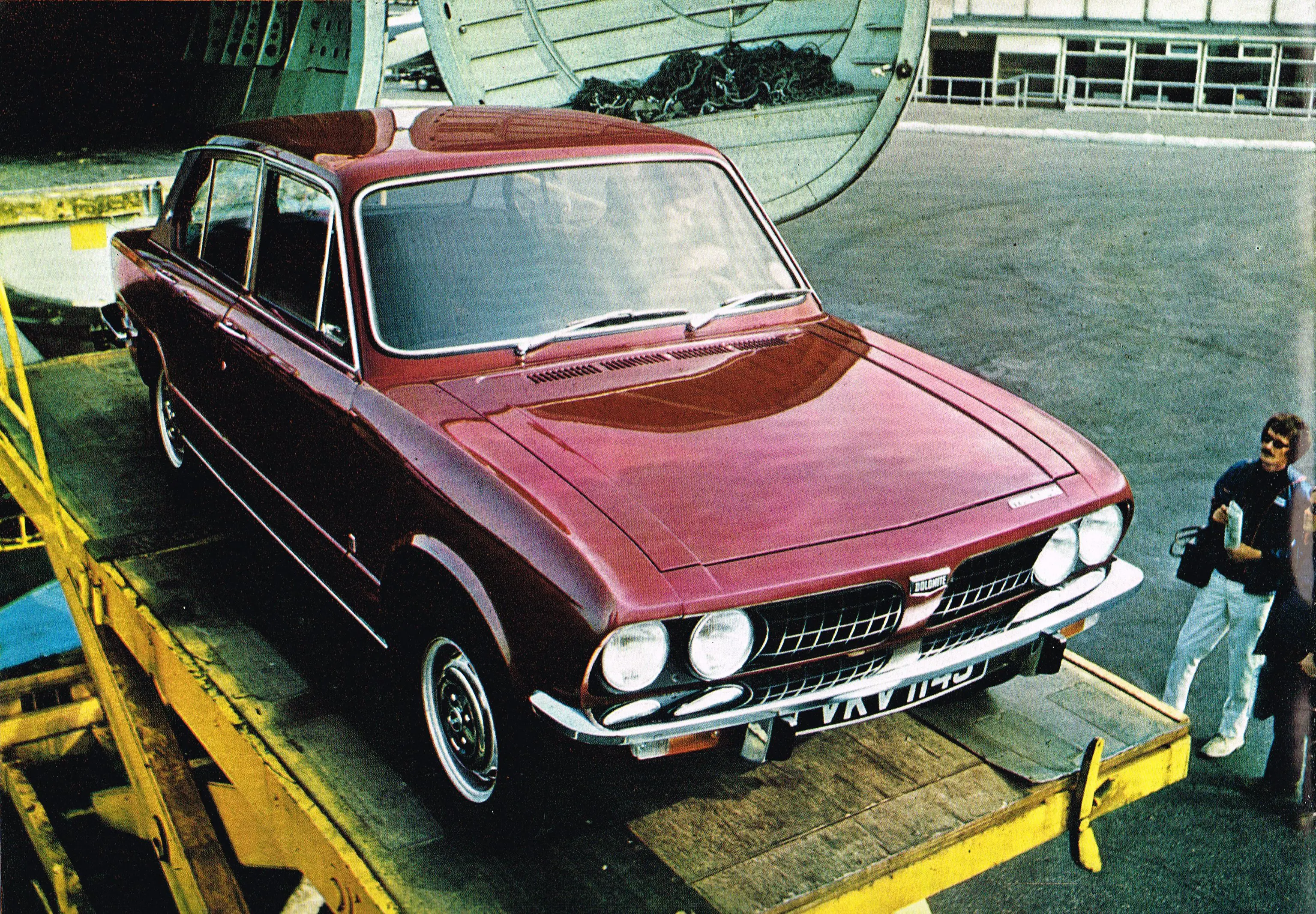THE TRIUMPH DOLOMITE: A CELBRATION
28 October 2021
The year is 1971, and motorists reading The Illustrated London News learned some rather depressing news; “paralysed by strikes and other factories slowed down for lack of components. British Leyland had to withdraw their new Triumph Dolomite from the London Motor Show.” Full production would not commence until the autumn of 1972, and British Leyland wisely decided that every Triumph distributor would have at least one demonstration model.
Visitors to their local dealer would have found a very appealing saloon with a top speed in the region of 100 mph, with 0-60 in 11.5 seconds. The brochure promised “your first trip in a Dolomite will show you what it can do – without any show-off devices”, and it seemed ideal for the motorist with BMW 1602/Alfa Romeo 2000 Berlina tastes but a Cortina 2.0-litre GXL income.

Indeed, at £1,399, the Dolomite was cheaper than the Ford, despite the standard equipment including full instrumentation, a heated rear screen, an adjustable steering column, plus a cigarette lighter for that afternoon Rothman’s Kings Size. The grille and C pillars were finished in matt black, while the wooden door cappings, pile carpeting, and Broadcord’ Bri-Nylon’ upholstery blended tradition with modernity.
The Dolomite was the latest model in Triumph’s revitalised saloon line-up. Late 1969 saw the launch of the 2000/2.5 PI Mk. II ‘Innsbruck’ followed by the demise of the Herald saloons in 1970. In that same year, the Toledo (short boot and RWD) and the 1500 (long boot and FWD) succeeded the 1300, while the last Herald estates and convertibles left the factory in 1971.
The remaining member of the ‘old guard’ was the Vitesse 2 Litre Mk. II, with the Dolomite serving as its replacement. In essence, it combined the 1500’s four-door bodyshell with the Toledo’s rear suspension and a twin-Stromberg carburettor version of the 1,854cc OHC engine developed with Saab. The origins of the agreement between Trollhättan and Canley dated back to 1963 and as Greg MacLeman explained in Classic & Sports Car: “The result of the collaboration was the Triumph slant-four. Compact and powerful, it featured four cylinders tilted at 45º from the vertical, which not only allowed for a low bonnet line, but also provided cost benefits when expanding the range. Essentially, two slant-fours could be combined to create Triumph’s 3-litre V8, saving investment in additional tooling.”
The Saab 99 of 1967 was the first result of this partnership, followed by the Stag in 1970 and the Dolomite.
Motor thought it was the Triumph’s “overall excellence, judged by such international standards (i.e. Alfa Romeo, BMW, Fiat and Saab), that endeared the car to all who drove it”. Leyland derived further publicity from Scotties’ Tissues offering a Dolomite as first prize in their ‘Choose an Ideal Man’ competition. N.B. The second prize was a colour television set, and the third was a Kenwood Chef that was allegedly ‘indispensable to every woman’.
In short, BL appeared to have produced the right car at the right time. Fifty years ago, a BMW or Alfa Romeo would have been a comparatively exotic sight, while the Dolomite was rather more accessible to the average British consumer. Nor was a bodyshell that dated back to 1965 necessarily a sales disadvantage. The 1602 derived its looks from the 1500 ‘Neue Klasse’ of 1961, while the 2000’s lines harked back to the 1962 Giulia.
However, Motoring Which of July 1973 struck a note of caution, warning that the Dolomite possessed an Achilles’ Heel; unreliability. Indeed, industrial disputes delaying Triumph’s intended late 1970 launch date reflected that all was not well at Canley. But the Dolomite truly appeared to be an extremely desirable four-seater sporting saloon. And, as the advertising campaign proclaimed, “No stripes. No GT badges. No matt black bonnet”.
Why choose Lancaster Insurance?
Here at Lancaster, we love classic cars as much as you do and we understand what it takes to protect them for future generations.
We have links with some of the top classic car clubs around the country and some of our policies even offer discounts of up to 25% for club members.
Other benefits of classic car insurance through Lancaster can include:
- Historic rally cover
- Static show cover
- Limited mileage discounts
- Choice of repairer
- 24-hour claims helpline
Give your classic the protection it deserves and get an insurance quote for your classic car today.
